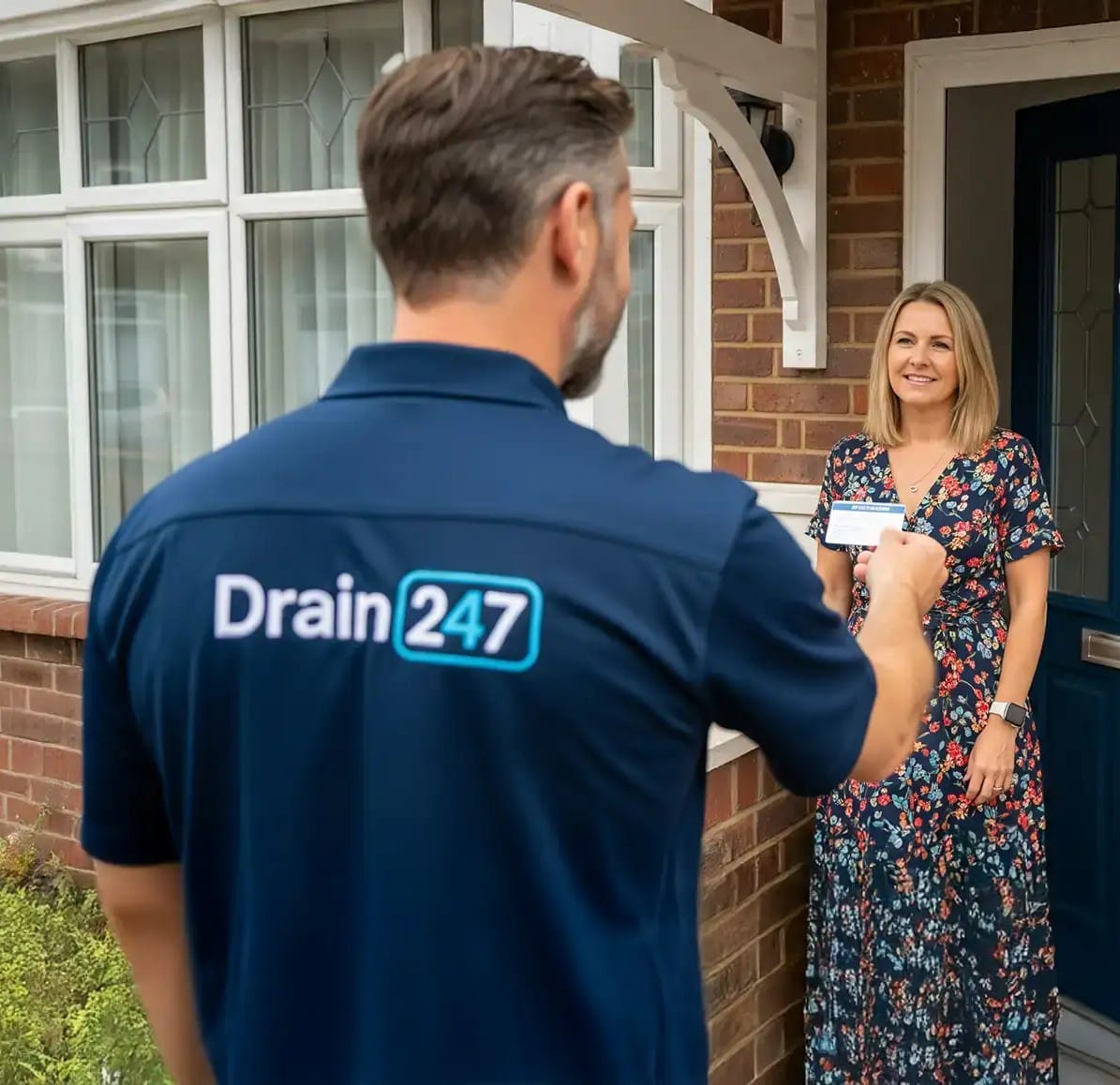Culvert CleaningInspection, Maintenance & Repair
From emergency culvert cleaning to detailed structural inspections and trenchless repairs, Drain 247 specialist services are designed to manage and maintain critical watercourse infrastructure.
Proven Experience in London & Hertfordshire
Our experience includes essential culvert maintenance and emergency clearance projects for: Maintaining and de-silting crucial highway culverts under major trunk roads and motorways, including the M25 and M1, to ensure road stability and prevent flooding. Providing specialist CCTV inspections and trenchless repairs for critical culverts running beneath mainline railway tracks and key transport hubs across London.
Commercial & Industrial Sites: Working with commercial property managers on large-scale industrial estates and retail parks in Hertfordshire to manage surface water drainage and prevent operational disruption. Flood Prevention clearing and repairing waterway and river culverts to protect communities, parks, and public spaces.
Expert Culvert Cleaning & Maintenance in London & Hertfordshire
Culverts are crucial for flood prevention and protecting transport links. Failure can cause major disruptions, making proactive inspection, cleaning, and repair essential.
Drain 247 offers complete culvert maintenance across London, Hertfordshire, and the surrounding areas in the South East, combining advanced diagnostics, heavy-duty cleaning, and trenchless repairs for public and private clients.
Our services include:
Detailed condition assessments using CCTV, sonar, and laser profiling
Powerful de-silting and cleaning to restore full flow
Trenchless ‘no-dig’ culvert repairs
Scheduled maintenance programmes for compliance and reliability
24/7 emergency response for blockages and flooding


Advanced Diagnostic & Cleaning Technology
A successful culvert inspection or cleaning operation depends on having the right tools. Our investment in a state-of-the-art fleet gives us the ability to tackle any challenge.
Robust crawler camera units form the backbone of our visual assessments, while specialist float rafts allow us to survey submerged pipes. For engineering-grade analysis, our laser profilers create detailed 3D models to detect subtle deformities.
When it comes to culvert cleaning, our combination JetVac tankers deliver unmatched power, using industrial-strength vacuums to extract heavy debris and high-volume water jets to flush the structure clean.
Different Types of Culvert We Undertake
Culvert Service Applications.
Here’s a shortened version capturing the main points:
Culvert Condition Inspections
Our OS19X-certified teams use advanced technology for visual culvert inspections, producing detailed reports to guide maintenance and repair planning.
Culvert Cleaning & De-Silting
We restore culvert flow by removing silt, gravel, and vegetation using powerful vacuum tankers and high-volume jetting, ensuring full capacity.
Culvert Repair & Rehabilitation
We offer trenchless repairs like CIPP lining and patch liners for fast, cost-effective restoration, as well as traditional excavation for severe damage.


Why Partner With Drain 247 for Culvert Inspection, Cleaning & Repairs?
- A Complete In-House Solution: We manage the entire project lifecycle, from initial assessment and traffic management to inspection, cleaning, repair, and final reporting.
- 24/7 Emergency Capability: Our teams are on standby around the clock to respond to critical failures and flooding incidents across UK.
- Specialist Fleet & Technology: We have the right tools for the job, including JetVac tankers, CCTV crawlers, and trenchless repair equipment.
- Assured Compliance: As a licensed waste carrier, we provide all necessary documentation for waste disposal, ensuring your legal ‘Duty of Care’ is met.
- Actionable, Clear Reporting: We deliver engineering-grade reports that provide clear data and expert recommendations you can rely on.
To discuss a culvert inspection, cleaning, or repair requirements in London or Hertfordshire, contact our specialist team today for a full consultation and free quote.
Our Core Services Include:
- Emergency Repairs & Drain Blockage Removal
- CCTV Drain Inspections & Surveys
- No-Dig Drain & Pipe Lining
- Liquid Waste Removal & Tanker Hire
- Drain Mapping & Comprehensive CAD plans
- Drain Jetting Services
We offer comprehensive culvert care, ensuring a full spectrum of diagnostic, preventive, and treatment services tailored to individual needs.
Frequently Asked Questions

What warning signs indicate my culvert is at risk?
Look for water pooling at the entrance (known as ‘ponding’), sinkholes or dips in the ground above, embankment erosion, and any localised flooding after rainfall.
How do you decide how often a culvert needs maintenance?
The frequency of culvert maintenance depends on its age, condition, and the risk it poses. We can help you develop a risk-based inspection schedule, from annually for critical assets to every 5 years for lower-risk structures.
Can you repair a culvert without digging up the road?
Yes, in many cases. Our trenchless culvert repair methods, like CIPP lining, allow us to fix cracks and fractures from within the pipe, avoiding excavation
What makes culvert cleaning different from drain cleaning?
Culvert cleaning involves removing much heavier and larger volumes of debris (silt, gravel, stone) and requires significantly more powerful, larger-scale equipment like JetVac tankers, compared to standard drain jetting.
What is a culvert and its purpose?
A culvert is a drain or tunnel that channels water under an obstruction like a road or railway. Its main purpose is to prevent flooding and erosion by allowing water to pass through freely, protecting the structure above it.
What are the common types of culverts?
Culverts are typically categorized by their shape and the material they’re made from. The most common types include:
Pipe Culverts: Usually circular and made of metal, concrete, or plastic.
Box Culverts: Rectangular structures made of reinforced concrete.
Arch Culverts: Arched structures, often with a natural bottom.
The choice depends on the water flow, cost, and site conditions.
Why do culverts fail and how is it prevented
Culverts typically fail for four main reasons:
Blockage from debris clogging the opening.
Undersizing, which causes water to flow over the road during heavy rain.
Structural collapse from corrosion, damage, or age.
Erosion (scour) at the outlet, which undermines the structure.
Prevention relies on proper design, regular inspections, and routine maintenance, especially clearing away debris.
Contact
We are Here:
42-44 Clarendon Road, Watford, Hertfordshire, WD17 1JJ
Call Us:
Get in Touch
Your email address will not be published. Required fields are marked *












